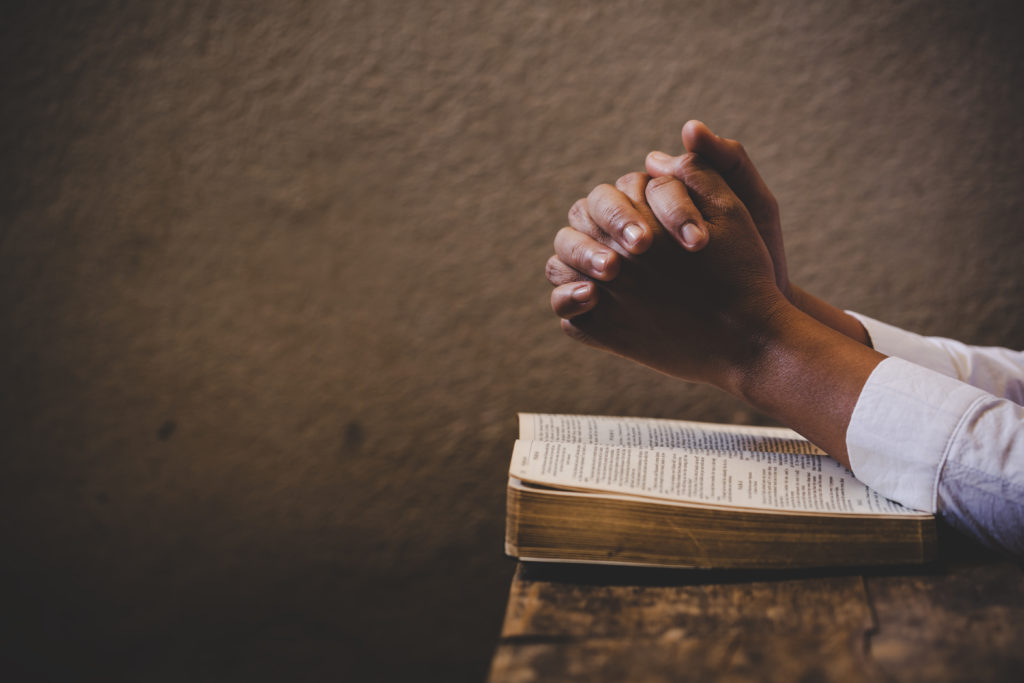

When confused, we extend them in bewilderment, as if asking for advice and direction. When desperate or frustrated, we throw them wildly in the air, perhaps also in resignation or dismay.

When afraid, we use them to cover our face or hold tightly to someone for protection. When uneasy, we sit on them to obscure our inner selves. When guilty, we hide our hands or hold incriminating evidence from view. When angry, we clench our fists, threatening harm to others. Either from embarrassment or fear, they would keep them stuffed in their pockets, hidden from sight behind their backs, or nervously twiddle them in a variety of annoying ways. When I taught homiletics (how to preach), one of the most difficult tasks was getting young preachers to use their hands properly.

The human hand gives visible expression to so many of our beliefs, feelings and intentions. If we are commanded to dance, kneel, sing and speak when we worship, what possible reason could there be for not engaging our hands as well? 4.

We will have glorified bodies forever in which to honor and adore our great God. But we are not, for that reason, any less physical beings. We must think rightly of God and love him with our heart and soul and mind (see Matt. Paul couldn’t have been more to the point when he exhorted us to present our “bodies as a living sacrifice, holy and acceptable to God,” which is our “spiritual worship” ( Romans 12:1).īy all means, we must worship with understanding. We are embodied souls, and are to worship God with our whole being. I will with my body, declare your worth.”īiblical Christianity celebrates God’s creation of physical reality (after all, he did pronounce it “good” in Genesis 1). In one particular wedding ceremony I performed, the woman was from England and asked that I include in the vows one particular part that goes as follows: The body, they say, is little more than a temporary prison for the soul that longs to escape into a pure, ethereal, altogether spiritual mode of being. The body must be controlled and suppressed and kept in check lest it defile the pure praise of one’s spirit. Gnostics focus almost exclusively on the non-material or “spiritual” dimensions of human existence and experience. Among other things, it endorses a hyper-spirituality that minimizes the goodness of physical reality. When I’m asked why I believe in the lifting of hands in worship, I will often say: “Because I’m not a Gnostic!” Gnosticism, both in its ancient and modern forms, disparages the body. We are urged to be a pastoral model for others by holding our hands together in prayer during the Our Father.I also have a question: Why do you assume that the appropriate place for your hands is at your side and you need an explicit biblical warrant for raising them? Wouldn’t it be just as reasonable to assume that the appropriate place for one’s hands is the lifting of hands toward heaven, calling for an explicit biblical warrant (other than gravity or physical exhaustion) to keep them low? 3. The habit of lifting up our hands during Mass may take a while to break. especially the eucharistic prayer, with its concluding doxology - or any other parts of the liturgy reserved to the celebrant priest. Neither may deacons or non-ordained members of the faithful use gestures or actions which are proper to the same priest celebrant. It is a grave abuse for any member of the non-ordained faithful to "quasi preside" at the Mass while leaving only that minimal participation to the priest which is necessary to secure validity." "In eucharistic celebrations deacons and non-ordained members of the faithful may not pronounce prayers - e.g. In 1997, Pope John Paul II delivered instructions “On Certain Questions Regarding the Collaboration of the Non-Ordained Faithful in the Sacred Ministry of Priest: Practical Provisions” and said: The laity should not lift up hands during the Our Father, along with responding “And with your Spirit” or at any other time during the Mass. Deacons, priests concelebrating Mass and the laity are not to use this posture. This posture is reserved for the celebrant only. Anytime the priest celebrating Mass offers prayers on behalf of the faithful, he uses the Orans Posture-extending his hands upward.


 0 kommentar(er)
0 kommentar(er)
